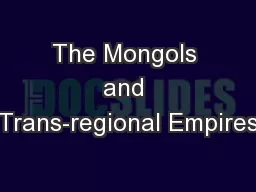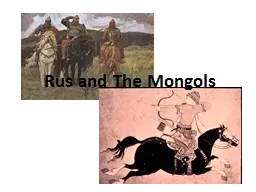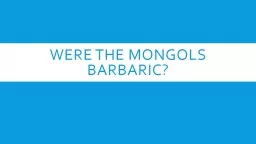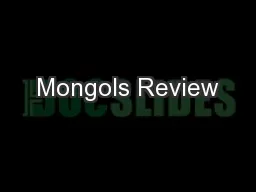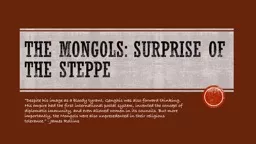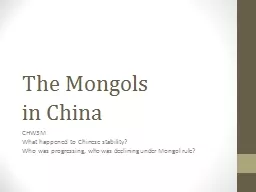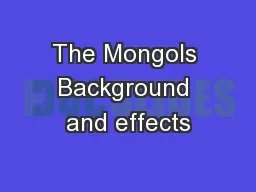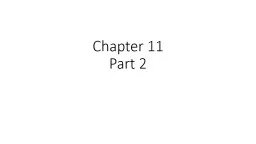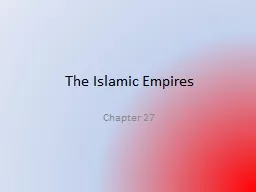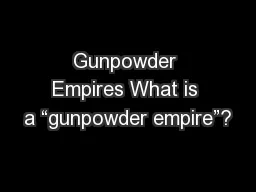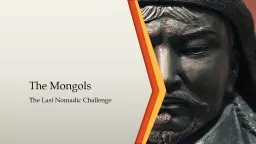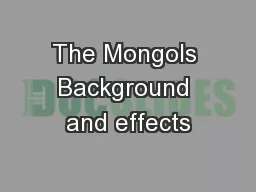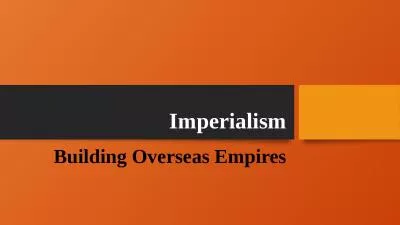PPT-The Mongols and Trans-regional Empires
Author : yoshiko-marsland | Published Date : 2018-02-04
As john green would say They are the exception The Mongols and their Surroundings Lived as clans north of the Gobi Desert Everyone was skilled horse riders and valued
Presentation Embed Code
Download Presentation
Download Presentation The PPT/PDF document "The Mongols and Trans-regional Empires" is the property of its rightful owner. Permission is granted to download and print the materials on this website for personal, non-commercial use only, and to display it on your personal computer provided you do not modify the materials and that you retain all copyright notices contained in the materials. By downloading content from our website, you accept the terms of this agreement.
The Mongols and Trans-regional Empires: Transcript
Download Rules Of Document
"The Mongols and Trans-regional Empires"The content belongs to its owner. You may download and print it for personal use, without modification, and keep all copyright notices. By downloading, you agree to these terms.
Related Documents

